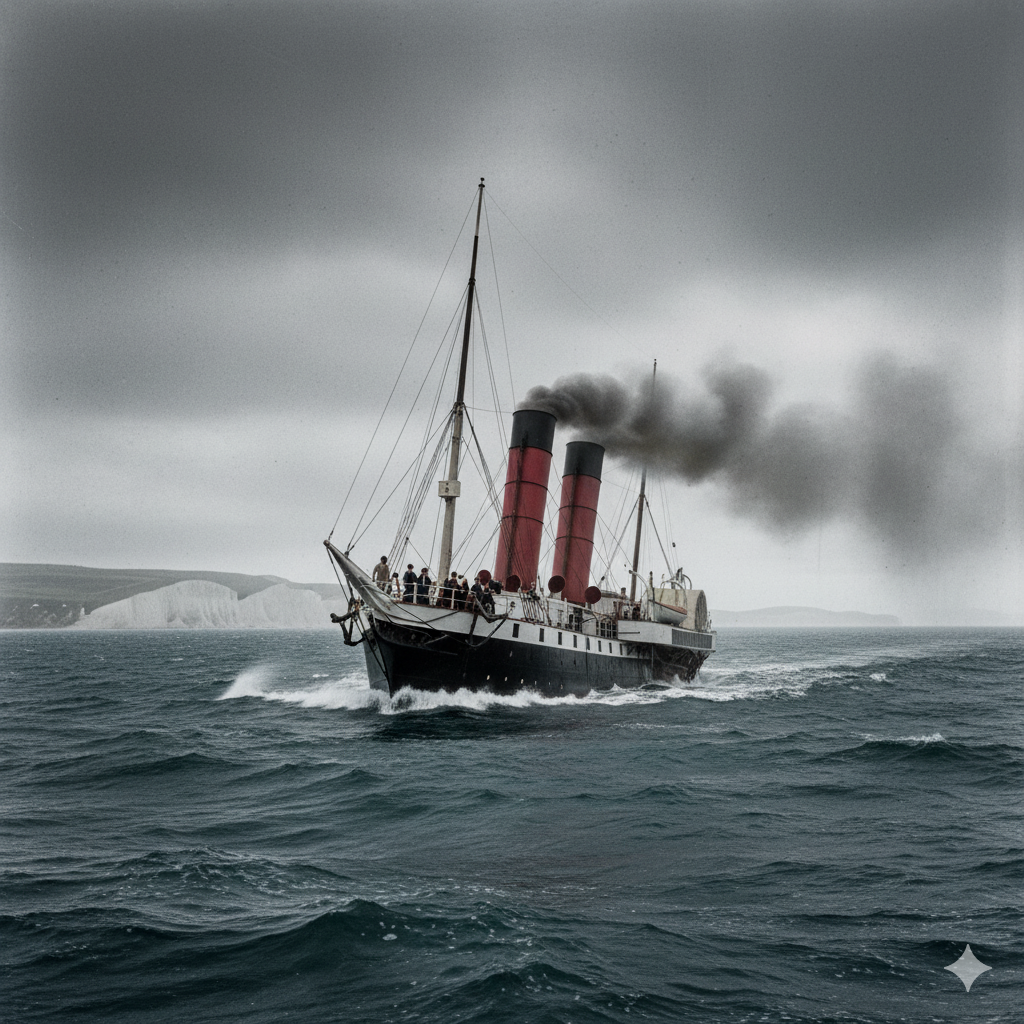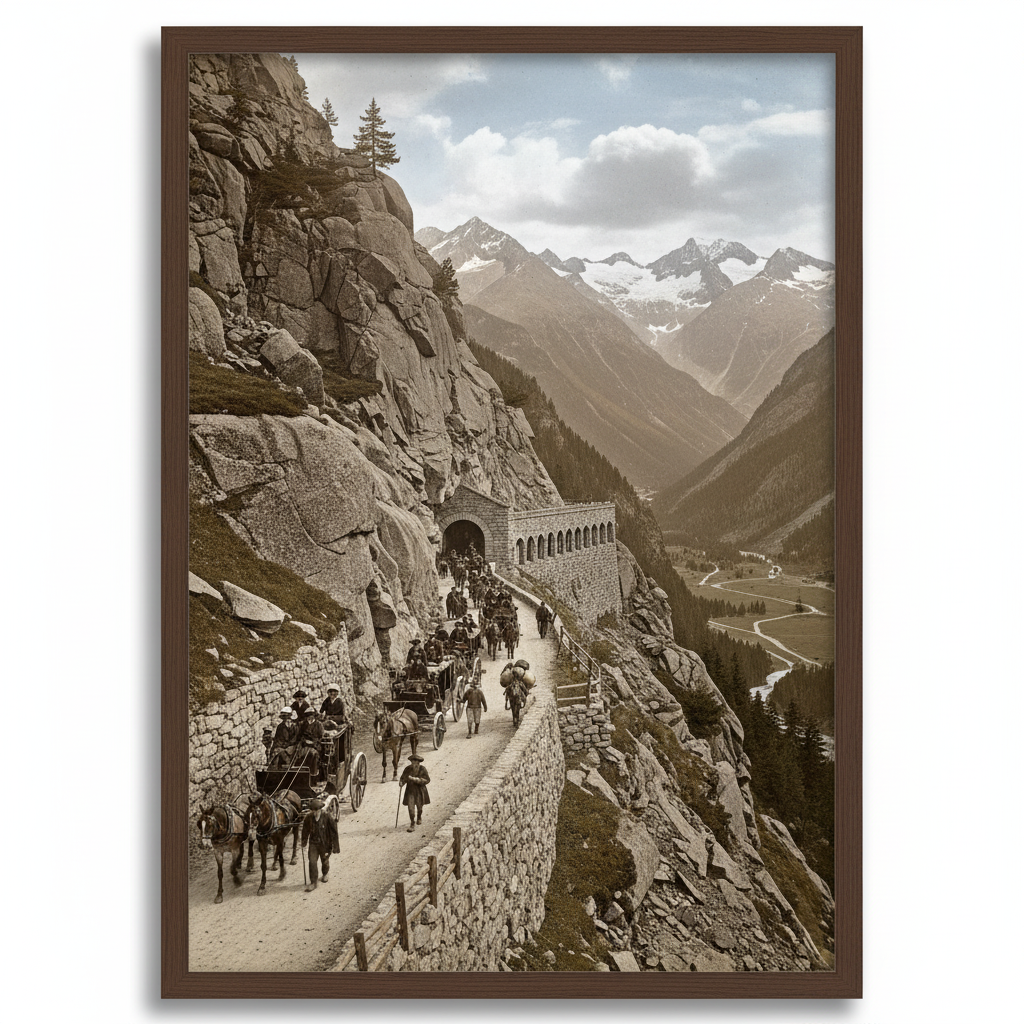From London to Lake Maggiore: A Journey of Discovery in 1858
When English painter James Baker Pyne set his sights on the Italian lakes in the mid-19th century, he was following in the footsteps of generations of Romantic artists who sought the sublime in nature. For Pyne, whose art celebrated the play of light and atmosphere, Lake Maggiore and the village of Baveno offered an ideal setting—a meeting of serenity, grandeur, and reflection. By 1858, the journey from London to the Lake Maggiore region had evolved from a grueling ordeal into a thrilling adventure. The spread of Europe’s international railway network brought unprecedented speed, comfort, and accessibility—transforming a voyage that once took weeks into a matter of days. Yet, even amid the marvels of steam and rail, reaching Baveno—a serene jewel on the shores of Lake Maggiore—still demanded planning, determination, and a spark of wanderlust.
The Route: London to Lake Maggiore
Rail from London to Dover or Folkestone
Travelers of the late 1850s boarded swift, comfortable trains that whisked them through the English countryside toward southern ports like Dover or Folkestone.
What had once been a bumpy, uncertain coach ride became a smooth prelude to continental exploration, offering glimpses of rolling fields, quaint villages, and the bustling life of the English countryside.
Crossing the English Channel by Steamship
Steamships had replaced the unpredictable sailing packets, cutting hours off the Channel crossing and delivering travelers to Calais or Boulogne with newfound reliability. The sight of the white cliffs fading behind them and the French coastline ahead was a thrill in itself—a first taste of the continent’s adventure.
Through France by Rail
France’s rapidly expanding rail network carried passengers from Calais to Paris and beyond. Elegant carriages offered respite and luxury as travelers sped toward the capital, often pausing for a night to enjoy Parisian cafés, theaters, and hotels. From there, trains continued south toward Dijon, Lyon, or Geneva, threading through landscapes where the industrial vigor of France met the grandeur of the Alpine frontier.
Crossing the Alps: The Simplon Pass
Though trains now dominated much of Europe, the Alps remained a dramatic obstacle. The Simplon Pass, engineered under Napoleon, was still the gateway to northern Italy. Carriages climbed winding passes, skirting glaciers, dense forests, and rushing rivers. Inns and relay stations offered welcome rest, but the journey remained exhilarating and unpredictable, a reminder that nature still ruled this wild and magnificent terrain.
Arrival in Italy and Lake Maggiore
Emerging into Piedmont, travelers encountered a growing network of Italian railways linking Novara, Milan, and Arona. From there, steamboats—operating on Lake Maggiore since 1826—glided across the shimmering water, carrying passengers to Stresa, Baveno, and other lakeside destinations. The lake’s placid surface mirrored the snow-capped Alps, the Borromean Islands, and the promise of adventure that awaited on the shore.
Duration and Experience
By 1858, the voyage from London to Baveno could be completed in four to seven days, depending on connections and accommodations. Wealthy travelers luxuriated in first-class rail compartments, Parisian hotels, and well-appointed Alpine inns, while artists and explorers embraced the occasional delay, sudden storm, or the thrill of coordinating multiple legs of a complex journey.
Compared to the rugged mail-coach expeditions of the 1830s, this was a new era of mobility. The seamless rhythm from train to steamer, city to mountains, captured the spirit of modern Europe—where art, leisure, and technology converged in a continuous flow of discovery.
Baveno Then and Now
In 1858, Baveno was a tranquil lakeside village defined by granite quarries, fishing, and farming. Its serene beauty, framed by the Borromean Islands and distant Alps, drew artists and travelers seeking inspiration and the poetry of untouched landscapes. Life moved at a gentle pace, anchored by centuries-old family traditions and local craftsmanship.
Today, Baveno thrives as a vibrant resort town. The same lake that once carried marble and granite now reflects the glow of boutique hotels, villas, and ferries ferrying eager visitors rather than stone. Yet the region’s timeless connection between landscape and artistry endures, continuing to inspire and captivate all who journey here.
A New Era of Exploration
By 1858, the romance of travel had transformed. The journey was no longer merely a test of endurance; it was a passage of discovery, beauty, and excitement. Rolling through countryside, mountains, and sparkling lakes, travelers found themselves immersed in a Europe of wonder—where every train whistle, steamer horn, and winding Alpine pass promised the thrill of adventure. For artists and wanderers alike, the journey to Lake Maggiore became not just a trip, but an experience to be savored.






